From June 22-25, more than 1,700 environmental problem solvers from around the world called the LEED certified Raleigh Convention Center home while attending the 108th Annual Conference and Exhibition of the Air and Waste Management Association. The theme of this year’s gathering, held for the first time in North Carolina, was ‘Connecting the Dots: Environmental Quality to Climate’. From the Exhibit Hall to Poster Sessions, Technical Presentations and Technical Tours, CCEE faculty, staff, students and alumni were prominent contributors. Furthermore, CCEE students were lauded with awards. Here’s a sample.
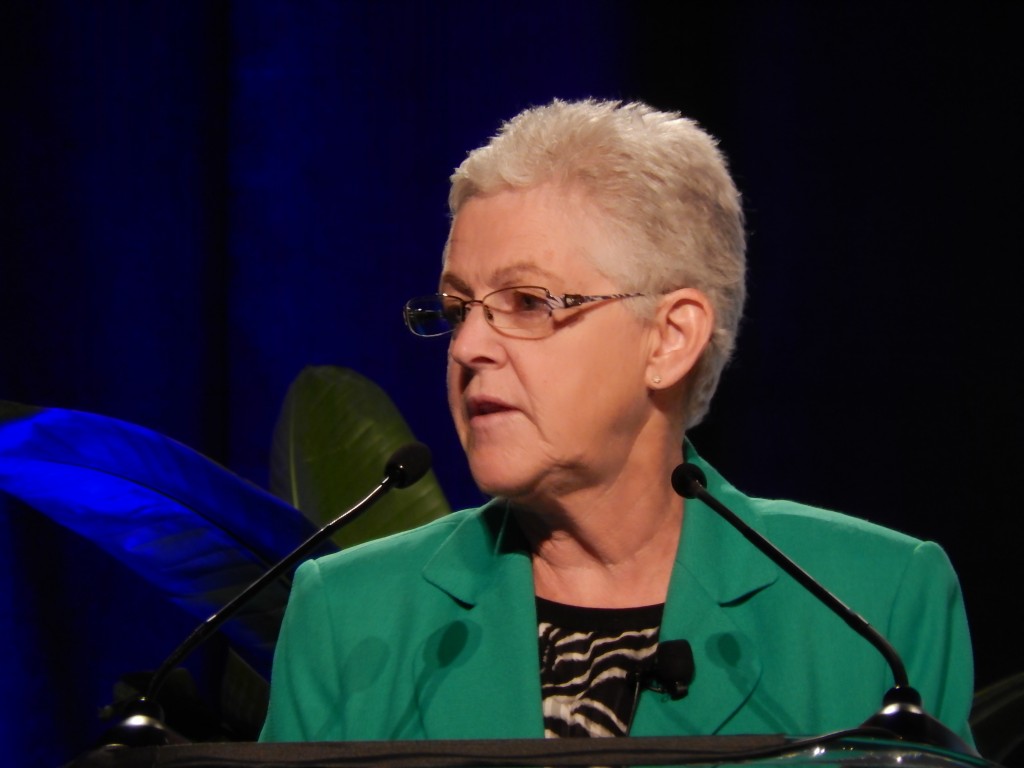
Solid Waste Management
Ongoing research at CCEE includes development and use of the Solid Waste Optimization Life-cycle Framework (SWOLF) (go.ncsu.edu/swolf), which is a life-cycle optimization tool capable of developing and assessing SWM strategies that meet environmental and economic objectives. PhD student Megan Jaunich presented a paper, co-authored by Drs. James Levis, Morton Barlaz, and Joseph DeCarolis, on the municipal solid waste collection model used in SWOLF. The model was developed and applied to compare fuel use and greenhouse gas emissions for refuse collection trucks powered by diesel and compressed natural gas (CNG).
Jaunich also presented a paper on “A Multi-Stage Life-Cycle Optimization Framework for Sustainable Waste Management Planning,” co-authored by Drs. Levis, DeCarolis, Ranji Ranjithan, and Barlaz. This application of SWOLF illustrates how greenhouse gas emissions can be reduced and material recovery (recycling) increased for a suburban U.S. city over the next 30 years. Also in the solid waste area, PhD student Joseph Weaver presented a study, co-authored with Dr. Barlaz, to develop a test method to verify biodegradability for plastic products.
Air Quality
Dr. H. Christopher Frey, his group, and collaborators presented nine papers. Dr. Frey presented on lessons learned from over 15 years of field measurements of the activity, energy use, and emissions of a wide variety of onroad and nonroad vehicles. PhD student Maryam Delarrafiee presented a comparison of the energy use and emissions of hybrid electric and conventional gasoline vehicles. Master’s student Xiaohui Zheng presented a characterization of the operating modes of a plug-in hybrid electric vehicle (PHEV) to assess interactions between vehicle activity, energy use, and emissions. PhD student Tanzila Khan reported on a first-of-a-kind study to assess the accuracy of EPA car and light truck fuel economy ratings and emissions certification compared to real-world driving. All of these papers were based on data obtained using Portable Emission Measurement Systems (PEMS).
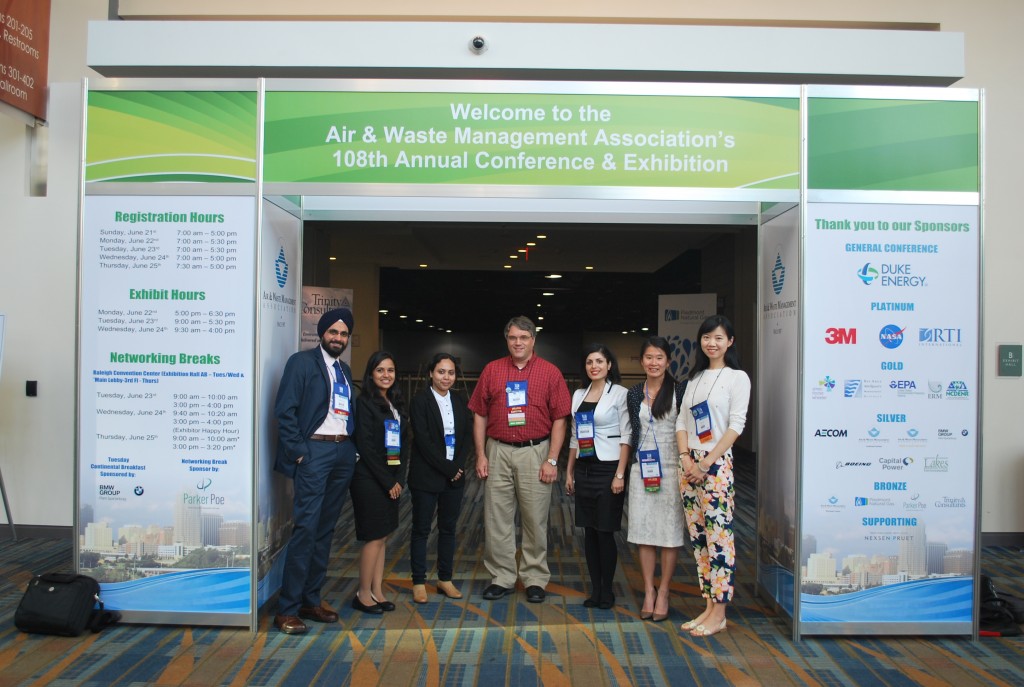
Several papers focused on diesel vehicles. Recent graduate Gurdas Sandhu (PhD CE, 2015) reported on a field study that quantified the real world activity, fuel use, and emissions of several types of refuse collection trucks using PEMS. Three papers were presented related to real-world emissions from railroad diesel locomotives. These included a paper led by Dr. Frey regarding the effect of biofuels on locomotive emissions, a paper led by Ph.D. student Jiangchuan Hu on the distribution of nitrogen oxides and hydrocarbons among different types of chemical compounds, and a paper led by PhD student Brandon Graver (MS ENE, 2010) regarding how differences in engineer behavior affect emissions.
Dr. Frey was co-author of a presentation with colleagues from the Hong Kong University of Science and Technology on the assessment of the exposure of children to ozone and particulate matter air pollution.
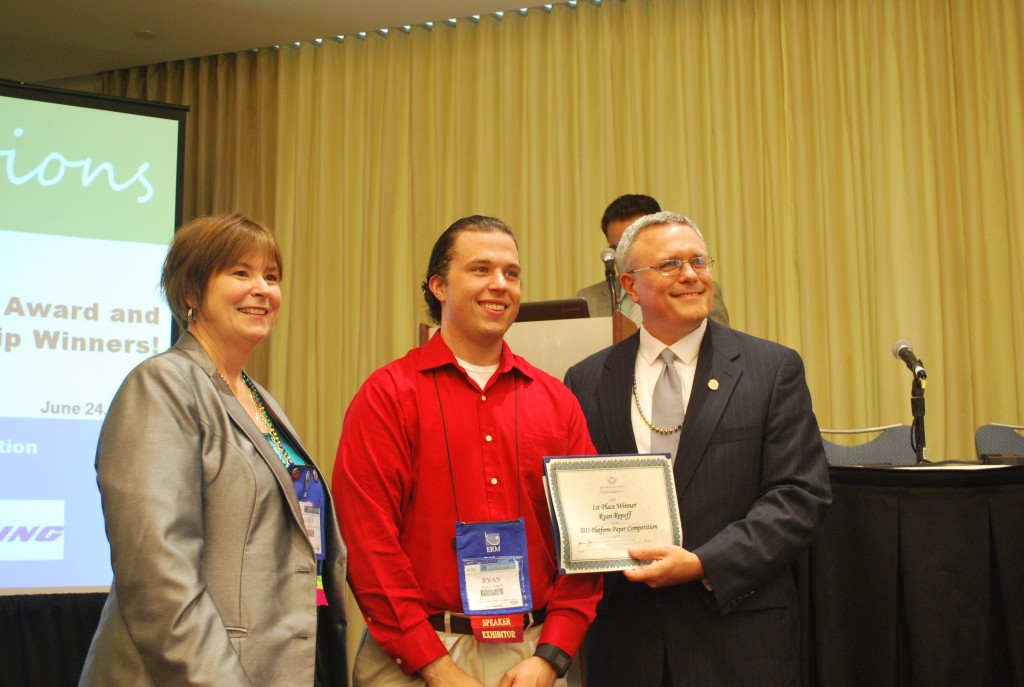
Several posters and papers were presented from the research group led by Dr. Andy Grieshop. PhD candidate Roshan Wathore presented a poster regarding cookstove emission fieldwork planned for two rural villages in India. Graduate student Ryan Repoff, who took top honors in the student platform competition, developed ways to evaluate how closely laboratory tests can replicate real-world cookstove operation, based on experiments conducted locally and comparison to prior data measured in India. Graduate student Stephen Reece is exploring the development and use of a small field deployable instrument that can measure secondary organic aerosols (SOAs) that result from emissions of organic compounds. PhD student Provat Saha earned a first place tie in the graduate level poster sessions for his study to improve the understanding of the transport and transformation of multiple air pollutants downwind of a highway.
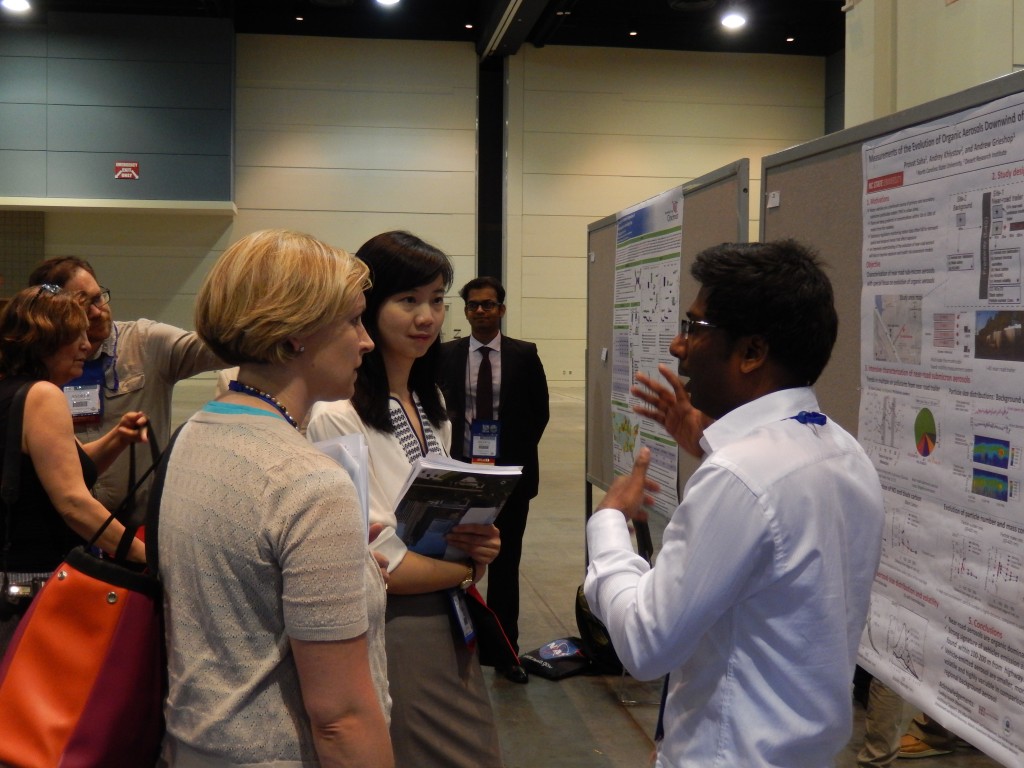
Other Topics
PhD student Ling Wang presented on how to better manage grease interceptor waste (GIW) from restaurants. GIW is a wastewater challenge because of the high content of fat, oil and grease (FOG) along with food particles and wastewater. Wang’s work, co-authored with Drs. Francis de los Reyes, Tarek Aziz, and Joel Ducoste, explores ways to co-digest GIW with sewage sludge.
Undergraduate student James East presented a poster, co-authored with Dr. Emily Berglund, in which a modeling framework was applied to the Falls Lake system near Raleigh to examine the potential effects of drought and population growth on water supply. Undergraduate student Jacob Monroe presented a poster, co-authored with Drs. Berglund and Ducoste, in which he applied a heuristic optimization approach to develop mathematical models for predicting the performance of UV disinfection reactors. East was awarded 1st place in the undergraduate poster competition, and Monroe was awarded 2nd place.
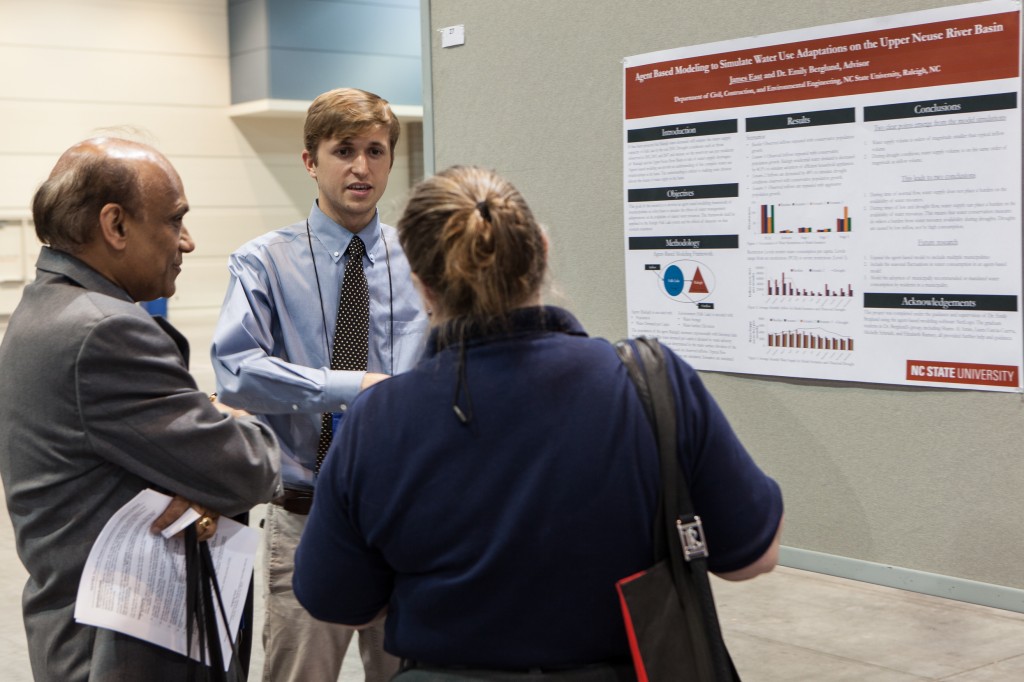
The AWMA meeting was a great opportunity for CCEE students to share their research with a global audience and to gain valuable experience in developing and delivering presentations, under the mentorship of their faculty advisors.
